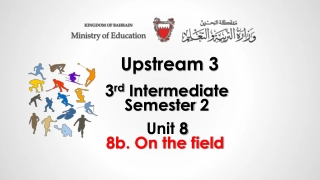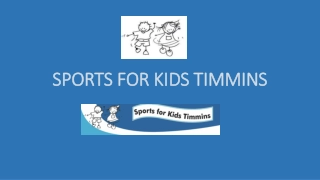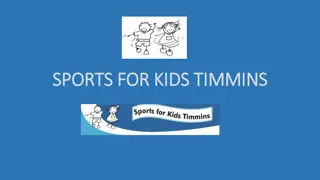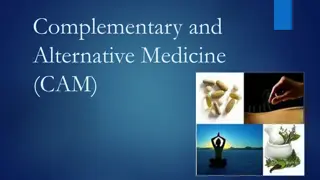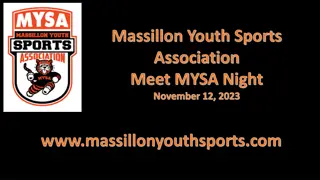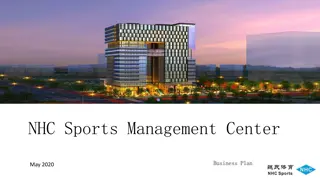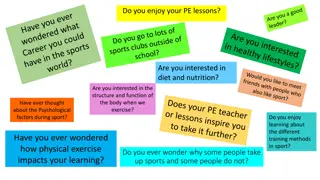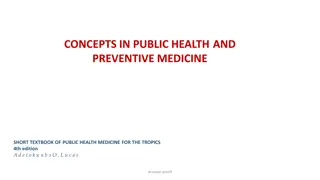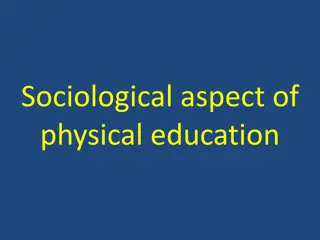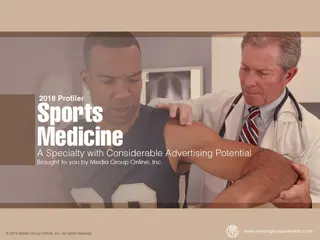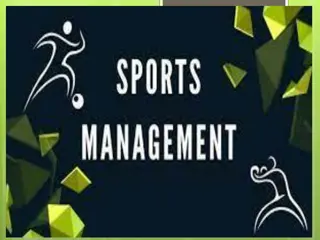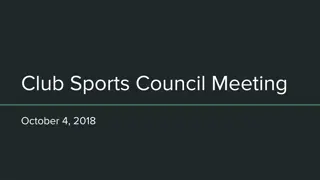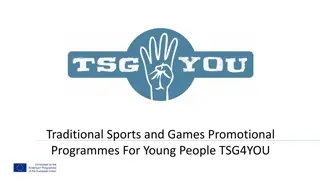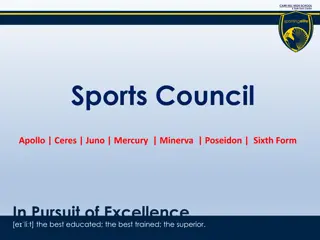Understanding Sports Medicine: A Comprehensive Overview
Sports medicine is a specialized field that focuses on physical fitness, injury prevention, and treatment related to sports and exercise. It encompasses various aspects such as the definition, aims, objectives, and topics covered in the field. The primary goal is to maintain, sustain, and enhance physical fitness while preventing and treating injuries. Sports medicine caters to a wide range of individuals, not just professional athletes, and aims to promote an active lifestyle and overall well-being through a multidimensional approach.
Download Presentation

Please find below an Image/Link to download the presentation.
The content on the website is provided AS IS for your information and personal use only. It may not be sold, licensed, or shared on other websites without obtaining consent from the author. Download presentation by click this link. If you encounter any issues during the download, it is possible that the publisher has removed the file from their server.
E N D
Presentation Transcript
SHRI GURU GOBIND SINGH JI GOVT. COLLEGE, PAONTA SAHIB, SIRMOUR (H.P)
B.A. 2nd YEAR COURSE NAME: SPORTS MEDICINE PHYSIOTHERAPY AND REHABILITATION COURSE CODE: PED203TH
SPORTS MEDICINE
TOPICS TO BE COVERED MEANING OF SPORTS MEDICINE DEFINITION OF SPORTS MEDICINE AIMS AND OBJECTIVES MEANING OF SPORTS INJURY TYPES OF SPORTS INJURIES CONCUSSION
MEANING OF SPORTS MEDICINE Sports medicine is a branch of medicine that deals with physical fitness and the treatment and prevention of injuries related to sports and exercise. Sports medicine is not just for professional athletes.
DEFINITION OF SPORTS MEDICINE A field of medicine concerned with the prevention and treatment of injuries and disorders that are related to participation in sports.
AIMS AND OBJECTIVES The goal / aim of sports medicine is to maintain, sustain, and at times to regain peak physical fitness i.e adaptability to stress---- physical and mental. Main functions of sports medicine are promotive, educative, formative, recreative, competitive, therapeutic and rehabilitative in nature.
AIM AIM : Aim of sports medicine is to deal with the improvement of general well being and health of the population through promotion of anactive lifestyle. In addition medical care of all people who exercise or involve sports activities and diagnosis treatment prevention rehabiliatation and functional evaluation following to injuries or illnesses resulting from amateur Recreational or professional participation to physical activities exercises and sports of the general interest in sports medicine.
OBJECTIVES The main objective of sports medicine is to restore a patient s functioning to the highest level possible . The other objectives are :- 1. Preventive health care - a Maintenance of fitness b Detection of disorders. c Functional Evaluation 2. Scientific promotion of games and sprots- a Planning of training programs b Evaluation of training programs c Injury prevention d Psychological counselling and guidance 3. extended to prevention of obesity cardiac illness cardiac rehabilitation prevention and control of diabetes. Sports Medical Services :- Sports medicine services may also be
MEANING OF SPORTS INJURY Sports injuries are commonly caused by overuse, direct impact, or the application of force that is greater than the body part can structurally withstand. Common injuries include bruises, sprains, strains, joint injuries and nose bleeds. Sports injuries are commonly caused by overuse, direct impact, or the application of force that is greater than the body part can structurally withstand. Common injuries include bruises, sprains, strains, joint injuries and nose bleeds. Medical investigation is important, as leaving an injury untreated can have far more severe consequences.
TYPES OF SPORTS INJURIES Some of the more common sports injuries include: Ankle sprain symptoms include pain, swelling and stiffness. Bruises a blow can cause small bleeds into the skin.
CONCUSSION Mild reversible brain injury from a blow to the head, which may be associated with loss of consciousness. Symptoms include headache, dizziness and short term memory loss. Cuts and abrasions are usually caused by falls. The knees and hands are particularly prone. Dehydration losing too much fluid can lead to heat exhaustion and heat stroke. Dental damage a blow to the jaw can crack, break or dislodge teeth. Groin strain symptoms include pain and swelling. Hamstring strain symptoms include pain, swelling and bruising. Knee joint injuries symptoms include pain, swelling and stiffness. The ligaments, tendons or cartilage can be affected.


